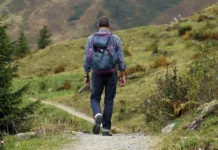Now that the world is slowly returning to normal, you may be thinking about planning some fun road trips with friends. But before you hit the open road, make sure to read through our tips for staying safe while driving.
Whether you’re traveling with friends or by yourself, it’s easy to let yourself get carried away blasting tunes, chatting up a storm, or taking in all the scenery. On the flip side, when things get more tedious, drowsy driving can become a huge issue.
We’re taking a look at distracted driving statistics and how to best combat drowsy driving to ensure you are safe out on the roads and having a great time doing it.
Plan Your Route, Keeping Essential Stops in Mind
The first thing you’ll want to do when planning any road trip is to map out your route.
You’ll want to make sure you know where essential stops, like gas stations, restaurants, and bathrooms, are located along the way.
Planning ahead will help keep you from making sudden stops that can be dangerous or getting yourself into a situation where you’re low on gas in the middle of nowhere.
Stay Alert While Driving and Avoid Distractions
It may seem like a no-brainer, but it’s important to avoid distracted driving. This means putting away your cell phone and keeping the music at a moderate volume.
If you’re traveling with others, take turns being the designated driver so everyone can enjoy the trip. And make sure to give yourself plenty of breaks. Driving for long periods of time can be tiring, and it’s important to stay alert behind the wheel.
Distracted Driving Statistics
One way to get an idea of how important alert driving can be is to review some of the most surprising and effective distracted driving statistics available.
Here are some statistics provided by CDC.gov.
- In 2019, distracted driving caused the deaths of more than 3,100 people and injuries to over 424,000.
- It can take your eyes off the road for an average of five seconds when you’re sending or reading a text. At 55 mph, that’s like driving the length of an entire football field with your eyes closed.
- Drivers aged 15 to 20 are more likely to be involved in a fatal distracted driving accident.
- 39% of high school students say they have texted or emailed while driving in the last 30 days.
As you can see, distracted driving is a serious issue on the roads. By being aware of the statistics and trying to avoid distracted driving, you can help make the roads safer for everyone.

Double-Check Your Vehicle’s Emergency Preparedness
No matter how well you plan, sometimes things happen that are out of your control. That’s why it’s always a good idea to have an emergency kit in your car.
Your emergency kit should include items like:
- Bag of sand or cat litter (for traction)
- Blankets
- Coolant
- First-aid kit
- Flares
- Flashlight
- Jumper cables
- Quart of oil
- Snacks and water
In addition, double-check to see if you have all the tools to replace a tire, and make sure your spare tire is in good repair. You can also bring along a plastic bag to cover your car mirrors when traveling alone.
Hopefully, you won’t need any of these emergency supplies. But if you do, you’ll be glad you double-checked them before the drive.
Check the Weather Conditions Before You Leave
Before you head out on your road trip, it’s important to check the weather conditions for your route. This will help you plan for any delays or changes in the schedule.
If you’re traveling during the winter, make sure to pack extra blankets and clothes in case you get stranded. And if you’re traveling during the summer, be sure to pack plenty of water and sunscreen.
If the weather is too hot, you also will need to consider the temperature of food or keeping medication cold while traveling. The simplest solution will be to bring along a cooler and plenty of ice or to ensure hotels and motels come equipped with a refrigerator.
Drive Defensively: Be Aware of Your Surroundings and Other Drivers
Defensive driving is all about being aware of your surroundings and other drivers on the road. This means being prepared for anything that might happen.
You can brush up on your skills by taking a defensive driving class, which could also reduce your car insurance rate by 5-10%.
If you see a car swerving in and out of their lane, slow down and give them plenty of space. And if you’re in heavy traffic, be extra cautious and watch for sudden stops.
Pairing Safe Driving With Having Fun
Road trips are a great way to see new places and explore different parts of the country. They’re also a great opportunity to bond with family and friends, create new memories, and have a lot of fun.
The key to having a successful road trip is to remember to relax and enjoy the journey. It’s not about getting to your destination as quickly as possible: It’s about taking the time to enjoy the scenery, meet new people, and create lasting memories.
So next time you’re planning a road trip, be sure to keep both safety and the fun factor in mind. You’ll be glad you did.

Luke Williams writes and researches for the car insurance comparison site, CarInsurance.org. His passions include best practices for insurance and safe driving habits.









